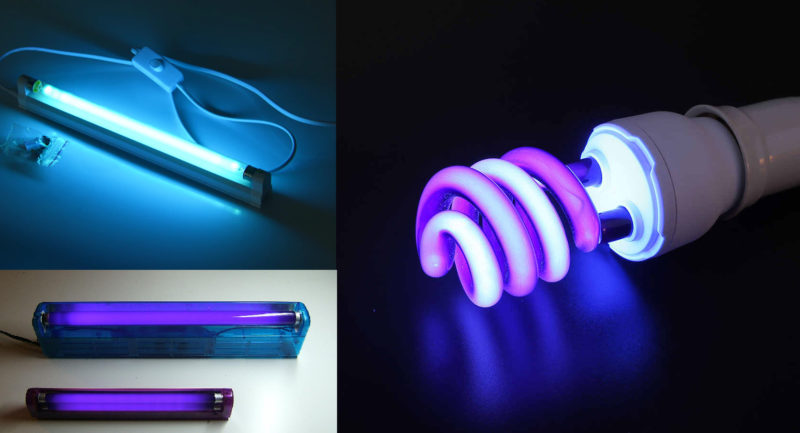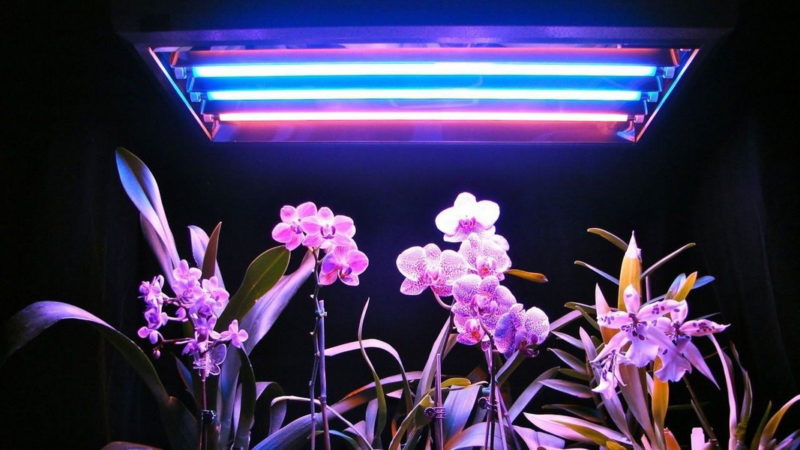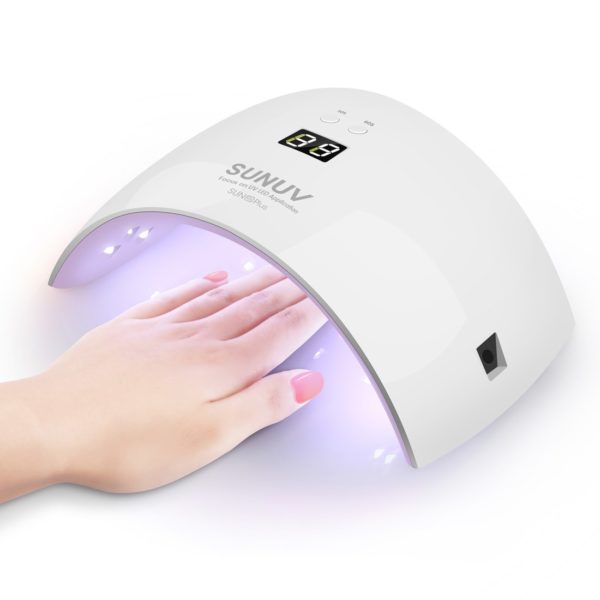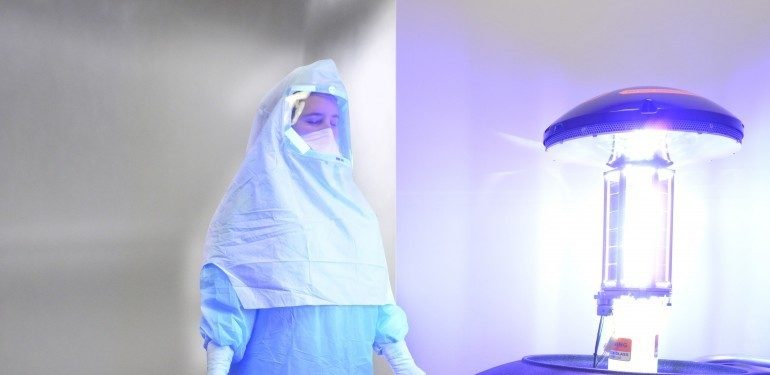The benefits and harms of a germicidal lamp for humans
Ultraviolet radiation generated by lamps is not only convenient, but also useful. The light generated is used in different areas of life. However, it can be both useful and dangerous, which should be considered at the stage of purchasing equipment.
What is a UV lamp
A UV lamp is an artificial source of radiation in a part of the sunlight spectrum. It consists of an emitter and a bulb that ensures an even distribution of the flux.
UV sources are used in a variety of applications, effectively disinfecting the environment.
Varieties

UV lamps come in a variety of types. Let's consider a few popular ones:
- Quartz. Devices with a quartz glass bulb, which transmits UV rays, but causes the release of harmful ozone.
- Bactericidal. Improved discharge lamps with mercury vapor inside the bulb. The glass transmits a range of UV rays without risk to health.
- Fluorescent emitters. Function much the same way as conventional fluorescent light sources. The inside of the glass is coated with a phosphor that lets ultraviolet light through.
- Amalgam. A special feature of such devices is the presence of bismuth and indium inside the bulb, which mix with the mercury and make it safer for humans. Even if the bulb leaks accidentally, the risk of poisoning is minimized due to the rapid binding of harmful substances.
The choice of emitter type depends on installation requirements, operating conditions and user preferences.
Quartz lamp vs. germicidal lamp. How to choose?
Useful properties of the lamp
The main useful property of the UV lamp is an active effect on bacteria, germs and viruses and their complete destruction. The devices effectively clean the air, disinfect objects and surfaces.
To the benefits of the rays include the opportunity to replenish the supply of vitamin D, which is not always possible to get from the sun. Especially important for residents of northern regions.
Separately, it is worth noting the impact of ultraviolet light on the human body during the fight against various diseases. Dosed irradiation helps to eliminate the cause and restore the body faster.
What it's used for

Modern UV irradiators are used in the following areas:
- Water purification. Effective disinfection of water from bacteria and germs before consumption. Household disinfection as well as organization of purification stations is possible.
- Club lighting. Safe UV lamps are used to organize unusual lighting effects during parties or discos.
- Tanning. As an artificial substitute for the sun, UV light can provide a person with an even and beautiful tan. This can be done at home with a compact radiator, but for a quality tan it is better to go to a tanning salon.
- Medicine. UV sources can be used to treat runny nose, colds and throat problems. Devices with special nozzles are used for this purpose.
- Checking documents and banknotes. All valuable forms and money have a set of invisible to the eye components, degrees of authenticity protection. Under UV light these hidden marks can be seen.
- Cultivation. Emitters can provide plants with the ultraviolet light they need to grow. This accelerates growth and makes the growing process stable.
- Manicuring .. Manicure UV lamps are used to fix various gel lacquers and shellacs in salons or at home.

This is not a complete list of uses for UV lamps.
How to use a UV lamp
Before using a UV device, you need to carefully study the instructions. All recommendations should be followed strictly without deviations from norms.
Particular care should be taken with the open-type elements, which involve a strong irradiation of the surrounding area. It is better to use a system in which the switch is located outside the room to be treated. In this way, you can minimize your body's exposure to ultraviolet light.
The treatment time will depend on the volume of the room as well as the specific characteristics of the radiation source used. The values are specified in the instructions.
If a closed-type model is used, then you do not have to worry about unwanted effects on the body. Such designs are designed for rooms with people. All disinfection processes are carried out inside the container, and already purified air goes outside.
It will be useful to familiarize yourself with: How to use a germicidal lamp.
Contraindications to the use of the lamp
Familiarize yourself with the list of undesirable effects of a particular emitter is recommended even before purchase. It is also not superfluous to consult a doctor. Often the ability to tolerate a particular radiation is related to the individual characteristics of the body.
Topical video
Do not use UV sources in the presence of the following pathologies:
- Individual intolerance to ultraviolet light;
- Tumors of any kind;
- Active form of tuberculosis;
- inflammatory processes;
- Gastrointestinal problems;
- kidney failure;
- heart disease;
- hypertension.
Exposure to ultraviolet light in these cases can cause serious complications and make general therapy difficult.
What can be the harm
If during the operation of the device the person will fully comply with all the prescriptions and recommendations, then there can be no harm from the ultraviolet lamp. This is facilitated by the closed design of some models. When using closed emitters, a person can be in the room to be treated.
See also: Quartz treatment - does it kill viruses or people?
However, open UV and quartz bactericidal lamps are quite dangerous to health. The radiation generated has a negative effect on living tissue, and the specific design involves the gradual conversion of oxygen into harmful ozone. This is bad for health, especially if the safety rules are regularly neglected.
When treating rooms with such devices, it is important to take care to completely clear the area of people, animals and plants. If you have to be close to the device, you must wear safety glasses. At the end of the disinfection, the room must be ventilated.
Recommended reading: Eye burn with an ultraviolet lamp.
